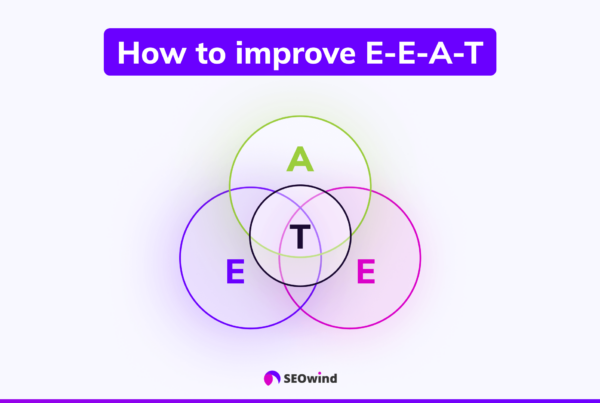Are you looking to maximize your content potential and get more out of your marketing efforts? Say hello to content repurposing! This not-so-secret weapon has proven to be a game-changer for countless marketers, leading to enhanced visibility, increased engagement rates, and improved ROI.
We’ll explore the multifaceted world of content repurposing, providing tips, tricks, and strategies designed to supercharge your marketing initiatives. So buckle up and join me on this exciting journey as we power up your marketing strategy together!
What is Content Repurposing?
At its core, content repurposing entails taking existing material – an article, video, infographic, or podcast – and transforming it into new formats that can be used across various platforms. The aim behind this approach is two-fold. Firstly, you cater to diverse audience preferences by repackaging information differently. Secondly, these creative adaptations increase exposure without additional time or effort.
For instance, consider a well-received blog post that can easily be converted into a series of tweets or even an informative podcast episode. Similarly, statistics from a market research report might translate well into visually appealing infographics perfect for sharing on Pinterest. By embracing content repurposing in your marketing strategy, whether through examples like these or others, you effectively amplify your message while optimizing the resources. And let’s face it—who doesn’t appreciate efficiency paired with impactful outcomes?
Benefits of Content Repurposing
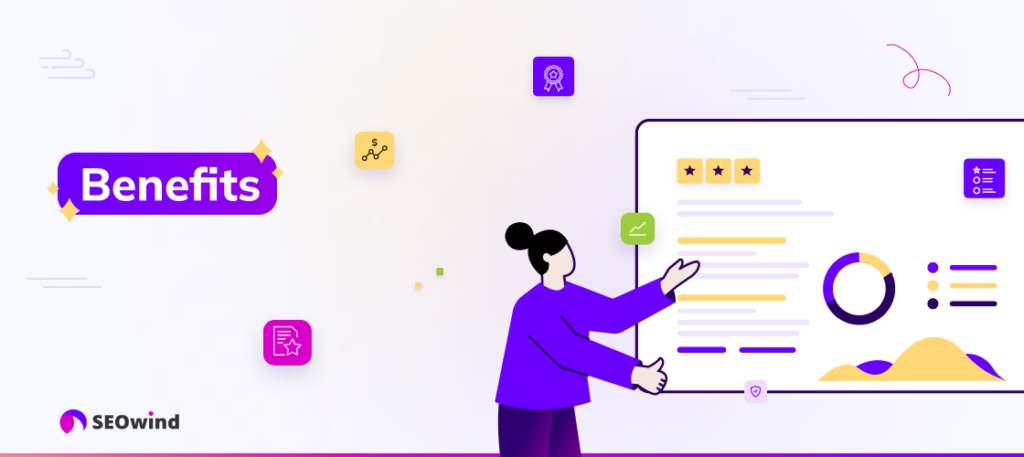
Content repurposing is a valuable strategy for any marketer looking to maximize their efforts. By reformatting, updating, and transforming your existing content into different formats or platforms, you unlock numerous benefits that help amplify your content’s reach and effectiveness. Here are some significant advantages of incorporating content repurposing into your marketing plan:
Amplify Brand Visibility
One primary benefit of content repurposing is the increased brand visibility it offers. You can spread your message across different channels and widen your potential audience by adapting your content to various formats, such as blog posts, infographics, podcasts, videos, social media updates, and more.
Reinforce Your Key Messages
Reiterating key points across multiple assets helps reinforce those messages in the minds of your target audience. When they encounter similar information in diverse forms, such as graphics or video snippets, they’re more likely to remember it better than if they only read a long-form article once.
Reach New Audiences
People prefer different types of content – what appeals to one person might not resonate with another. By offering material in various formats (e.g., audio for podcast enthusiasts), you optimize the chances that new audiences will discover and engage with your brand.
Save Time and Maximize Resources
Creating high-quality content requires time and resources. However, by strategically reusing existing material through repurposed content techniques, you efficiently leverage these investments while providing fresh pieces for your audience.
Improve SEO Ranking Opportunities
Repurposing older articles or data-driven research strengthens search engine optimization opportunities because you provide ample relevant and valuable information around a specific topic or keyword cluster by offering supplemental material, increasing the likelihood that search engines will rank this comprehensive resource higher.
Accommodate Different Learning Styles
Different types of content cater to various learning styles (i.e., visual, auditory, and kinesthetic). By repurposing your material into new formats (like an infographic or podcast episode), you’re accommodating these preferences and increasing prospects’ chances to absorb your information effectively.
Extend the Lifespan of Your Content
By transforming outdated articles with fresh perspectives, quotes, statistics, or visuals, you give those pieces a “second life” while exposing them to potential new audiences who may not have discovered them in their original state.
Embracing content repurposing adds diversity to your marketing strategy while maximizing efficiency and resources. You’ll reach broader audiences; communicate more effectively; enhance SEO performance; extend your content lifespan, and increase brand visibility—ultimately making this approach cost-effective and results-driven.
Where to Find Content That Deserves Repurposing
To leverage the power of content repurposing, you need to identify valuable and relevant material in your existing repository. Below are a few sources where you can find high-quality content that’s ideal for repurposing:
- Your blog or website: Review your archives and look for well-performing articles, comprehensive guides, or special reports. These can be broken down into smaller pieces, expanded upon, or transformed into fresh content formats such as infographics and videos.
- Relevant research papers and studies: Use authoritative research from experts within your industry as the basis for new content. Make sure to cite these sources correctly to maintain credibility.
- Past webinars and presentations: If you’ve hosted successful webinars or attended engaging conferences, consider converting those sessions into shorter video tutorials, podcast episodes, or written summaries.
- Survey results and case studies: Your company may have conducted insightful surveys that reveal exciting trends or statistics worth sharing with your audience. Similarly, case studies showcasing your product’s effectiveness could also serve as great resources for repurposed material.
- Social media posts: Review your top-performing social media content for ideas on what may resonate with a broader audience when repackaged in a more comprehensive format like blog posts or ebooks.
- User-generated Content (UGC): Tap into testimonials, reviews, comments, and forum discussions initiated by users who engage with your brand—it’s an excellent way to understand their perspective while demonstrating customer success stories.
- Competitor analysis: Monitor what works well for others in your industry to gather inspiration while ensuring you create unique value compared to competitor insights.
Content repurposing saves time and allows you to extend the life of already valuable materials while seamlessly reaching new audiences across different marketing channels.
How to Identify Content for Repurposing

Identifying the right types of content to repurpose as part of your marketing strategy can be a game-changer in helping you maximize the value of each piece you produce. By focusing on high-performing, evergreen, and share-worthy material, you can create multiple content formats that enhance user experience and visibility. Here are some essential factors to help you identify the perfect pieces for content repurposing.
Look at Analytics Data
When selecting content for repurposing, one crucial aspect is reviewing its performance using your analytics tools. Whether it’s Google Analytics or another service, examine pages with the following:
- High organic traffic
- The longer time spent by users
- Increased engagement, such as comments or shares
Content already proven successful with your audience is an excellent candidate for further amplification through repurposing.
Seek Outdated Content
Outdated materials present tremendous opportunities to refresh information, add new insights or updates, and repackage them into various formats fit modern audiences’ needs. To spot these evergreen gems:
- Scan through old posts or articles discussing significant industry changes or advancements.
- Review data-driven posts where stats may now be outdated and require updated data.
- Evaluate any visuals (charts, graphs, infographics) that need redesign.
Once identified, breathe life into these dated but still-relevant resources by transforming them into current assets that offer more than just simple face-lifts – which leads us to our next point.
Uncover Deep-Dive Topics
Some blog posts or articles cover topics extensively enough that they warrant breaking them down into smaller subsets of focused subtopics. These long-form pieces prove beneficial when seeking subject matter ideal for various mediums like podcasts, videos, social media posts, and more.
For instance, a comprehensive guide on “Content Marketing 101” could lend itself well to:
- A series of short YouTube tutorials on content marketing strategies,
- An infographic summarizing the principles of compelling storytelling in marketing,
- Quick social media posts outline minor aspects or tips, linking to the main article.
Consider User Suggestions and Feedback
Lastly, turn to your audience for potential repurposing inspirations. Audience feedback, such as users’ comments, emails, questions, or suggestions, may reveal demand for different formats or revisit older material.
For example:
- A podcast episode featuring an expert guest could fuel a blog post excerpting highlights of their insights with accompanying visuals.
- A frequent question from readers might warrant an FAQ piece to answer it directly.
By embracing this continuous loop of content-revival strategies tailored for various audience preferences and platforms, you can maximize the value derived from each piece while maintaining exceptional quality standards.
Steps for Repurposing Content
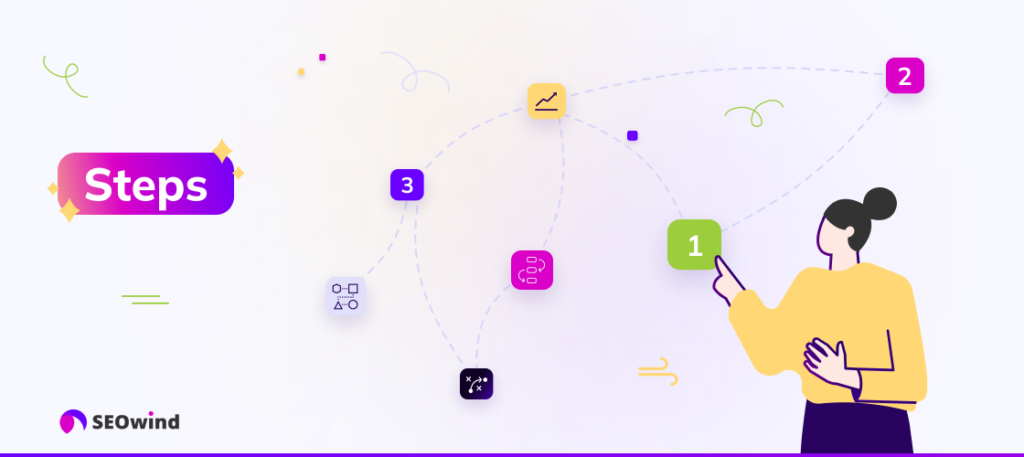
Repurposing Content is an effective way to maximize the potential of your existing content and reach new audiences. Following a step-by-step process, you can ensure your repurposed content is engaging and tailored to your target audience. Here’s what you need to do:
Step 1: Identify content to repurpose
Before you start repurposing, it’s essential to determine which pieces of content are worth revisiting. Look for high-performing articles, videos, or podcasts that have generated significant engagement, such as page views, shares, comments, or conversions. Analyzing your website analytics and monitoring social media performance can help pinpoint these top performers.
Also, consider choosing evergreen content – topics that remain relevant over time – as they have the most potential for repurposing since their value doesn’t diminish quickly.
Step 2: Decide how you want to repurpose content
Once you’ve selected suitable material for repurposing, brainstorm creative ways to adapt it into different formats. Examining the platforms where your audience is most active can help guide this decision-making process.
For example:
- Convert blog posts into infographics or slide presentations.
- Turn a video tutorial into a written how-to guide.
- Transform a series of blog posts into an ebook or email course.
- Adapt statistics and data from research studies into eye-catching social media graphics.
Remember that thinking outside the box is crucial when conceptualizing fresh approaches to presenting information.
Step 3: Optimize content based on the platform and audience expectations
When transforming existing material into new formats, remember that each platform has its own set of guidelines and audience preferences. Tailoring your repurposed content accordingly ensures optimal results and increased engagement rates.
Here are some tips for optimizing across different channels:
- Blog Posts – Use headings, subheadings, bullet points, and images to break up blocks of text, making it easy to read.
- Social Media – Write concise captions with relevant hashtags, and adjust the visual design according to each platform’s specifications (e.g., vertical images for Pinterest, square images for Instagram).
- Infographics – Use colors, icons, and typography that reflect your brand identity while maintaining a clean, readable design.
- Podcasts or Video Series – Edit audio/video for clarity and quality; provide transcripts or summaries for accessibility.
With these steps, you can repurpose content effectively and boost your marketing strategy by expanding your reach across various platforms.
12 Ways to Repurpose Content
Content repurposing can significantly amplify the reach and impact of your marketing efforts while reducing the time spent creating new content. This section explores 12 effective ways of repurposing content that will add diversity to your content strategy.
Create New Blog Content and Articles
One of the simplest ways to repurpose content is by transforming existing material into new blog posts or articles. This can be done through:
- Expanding on a subtopic from a previous article.
- Combining several related posts into a comprehensive guide.
- Turning Q&A discussions into informative write-ups.
Doing so allows you to leverage pre-existing insights and research while addressing different angles or emerging trends.
Create a Presentation
Transform written content into engaging slideshows that can be shared on platforms like SlideShare or used during webinars and events. By summarizing the main points with visuals and bullet points, you bridge the gap between text-heavy formats and easily digestible information for your audience.
Build an Infographic
Infographics are an excellent way to present complex data or statistics visually appealingly. Extract key findings from research-driven articles or blog posts and design eye-catching infographics that simplify information, making it more shareable while boosting engagement.
Create a Pinterest Instructographic
Like infographics but tailored for Pinterest’s user base, instruct graphics combine visual instructions with bite-sized descriptions. These step-by-step guides offer practical value while leveraging Pinterest’s impressive organic reach potential.
Refresh and Republish Old Posts
Bring outdated articles back to life by updating them with fresh data, the latest trends, or recent case studies. Not only does this optimize search engine rankings, but it also adds credibility to your content by presenting up-to-date insights for the reader’s benefit.
Repost and Re-promote to Social Media
Maximize the visibility of your core messages by repurposing content for different social media channels. Content can be adjusted to fit the platform’s format and subsequently shared with a new audience or reshared with existing audiences, leading to increased engagement.
Repost on Quora
Quora is a popular question-and-answer platform that allows you to tap into user-generated inquiries. By repurposing blog content as responses, you showcase your expertise while driving relevant traffic to your website.
Craft a Daily Email Series
Repurpose existing content by segmenting it into daily email series that offer valuable insights directly to subscribers’ inboxes. This approach nurtures ongoing engagement and keeps your audience informed without overwhelming them with lengthy reads at once.
Create an Ebook
Ebooks are excellent resources for providing comprehensive information on specific topics. Compile related articles or blog posts into a single ebook, add additional research or case studies if needed, and offer it as a lead magnet or standalone product.
Write a Guest Post or Two
Leverage the readership of relevant websites within your industry by repurposing content for guest posts. In addition to showcasing thought leadership, this strategy exposes you to broader audiences while generating backlinks for SEO purposes.
Create a Podcast or Video Series
A growing medium in recent years, podcasts and video series cater to users who prefer audio-visual formats over text-based ones. Convert key points from written material into episode outlines for captivating multimedia experiences that expand reach across various platforms.
Host a Webinar
Interactive learning sessions like webinars allow you to dive deeper into topics by repurposing blog content as presentation materials.
10 Examples of Content Repurposing

Content repurposing can breathe new life into your existing content, expanding its reach and capturing a wider audience. Here are ten examples of how you can transform one type of content into another:
Webinars –> Youtube Video Tutorials
Turn your live webinars into evergreen video tutorials by recording and editing the session to include closed captions or additional graphics. This repurposed content can be uploaded to platforms like YouTube or Vimeo, serving as a valuable resource for those who couldn’t attend the initial presentation.
Internal Data –> Case Studies
Repurpose internal data from your company’s projects, experiments, or analyses as case studies that showcase your expertise and provide insights into your industry. With approval from relevant stakeholders, these real-life examples can serve as powerful social proof for prospective clients.
Old Blog Posts –> Guides
Transform a series of related blog posts into comprehensive guides by combining them into a single document and updating them with any new information pertinent to the subject matter. These long-form assets will be more engaging for readers and help boost search engine rankings due to their comprehensive nature.
Quora Q&A –> Blog Post
Many popular questions on Quora are relevant to your industry or niche for inspiration when creating new blog posts. Answering these common queries in the form of an informative piece allows you to address frequent concerns while quickly generating topic ideas for new post.
Statistics –> Twitter Posts
Share impressive statistics from your research or content pieces on Twitter, giving people bite-sized tidbits that may prompt further interest in the full study or article behind each statistic shared.
Blog Post –> Podcast
Adapt long-form blog posts into engaging audio material by transforming them into podcast episodes where key points are broken down and discussed in greater depth. This content format benefits listener who may not have the time or inclination to read through lengthy text.
eBook -> Blog Post
Break down an eBook into multiple blog posts following a specific theme or containing related points, allowing readers who prefer shorter formats to consume your content in smaller pieces over some time. This approach helps maintain interest in your site with continuous fresh material.
Blog posts or short articles –> eBook or Pillar Page
Compile several popular blog posts covering similar themes into a cohesive eBook or pillar page that provides more comprehensive information for users seeking in-depth knowledge. This enhances user experience and has positive SEO implications as well.
Blog Posts –> Checklists
Turn instructional blog content into actionable checklists by summarizing key steps and recommendations, making it easy for readers to apply the suggested methods efficiently and effectively without lengthy explanations.
Blog Post –> LinkedIn Carousel
Repurpose informative blogs into visually appealing carousel posts on LinkedIn. Highlight key takeaways through eye-catching snippets, images, or graphics that can be easily shared within this platform’s relevant professional groups and networks.
How To Repurpose Webinars and Videos

Webinars and videos are engaging, interactive, and highly valuable forms of content. As such, repurposing them can give your marketing strategy a significant boost.
In this section, I’ll discuss strategies to make the most out of your webinar and video content by repurposing it effectively.
Extract Short Clips for Social Media Sharing
Repurposing webinars or long-format videos into shorter clips is an excellent way to provide bite-sized information on social media platforms. By extracting the key points or highlights from the video, you can easily create appealing micro-content pieces that drive engagement from your audience.
Transform Video Content into Blog Posts
Another way to repurpose webinar or video content is by turning it into blog posts. First, transcribe the audio from the material and use that script as a foundation for writing informative articles covering different aspects discussed in the original source. This provides readers who prefer text-based content an alternative to watching or listening.
Create Podcast Episodes
Video and audio used in webinars can also be repurposed into podcast episodes. Extract high-quality audio files from the source material, edit them accordingly to fit podcast requirements (e.g., length, format), and upload them on a relevant podcast platform like iTunes or Spotify.
Build Infographics based on Webinar Insights
Infographics are visually captivating ways to present data-driven insights from your webinars. Use statistical findings or crucial concepts presented during your discussion, then visualize these using creative graphics and concise descriptions.
Turn Video Interviews into Written Q&A Sessions
If your webinars feature expert interviews, consider transforming these conversations into written Q&A sessions for publication on blogs or other websites related to your niche. This will expose your content to another audience and demonstrate thought leadership within your industry.
Some tips for ensuring the effective repurposing of video/webinar content include:
- Ensuring that the repurposed material stays relevant and up-to-date.
- Targeting the right platforms and audience segments for each repurposed piece.
- Providing proper attribution to original sources or featured experts, as needed.
By following these strategies, you can unlock the untapped potential of your video and webinar content, helping you maximize your marketing efforts through Content repurposing initiatives.
How To Repurpose Podcasts

Podcasts have become an increasingly popular medium for delivering valuable content to diverse audiences. As a marketer, knowing how to repurpose podcast content can help you get more value from your efforts and increase the reach of your message. This section will discuss effectively leveraging podcasts by transforming them into formats suitable for different platforms and purposes.
1. Transcript Your Podcast Episodes
One of the primary ways to repurpose a podcast is by creating a transcript. Transcribing the audio file makes it easily accessible as written content, which can then be used in multiple ways:
- Publish the transcript as a blog post: A properly formatted and edited transcript can be informative.
- Use quotes from transcripts in social media posts: Utilize short, engaging snippets from your episodes that highlight key insights or thought-provoking statements.
- Develop long-form articles based on the conversation’s central themes: Utilize information discussed in several episodes to build comprehensive discussions on specific subjects.
2. Accompany Your Podcast with Show Notes
Show notes are summaries describing essential points covered in each episode. They also provide context and additional resources related to the topics discussed. Well-crafted show notes can offer numerous advantages:
- Improve SEO potential by using relevant keywords within their text.
- Allow readers to find answers quickly without listening through the entire episode.
- Offer opportunities for linking to other supporting material on your website or external sources.
3. Create Visual Content Based on Podcast Material
Visual materials like infographics and slide decks for presentations are excellent candidates for repurposing podcast content because they summarize information succinctly using appealing visuals.
To create such visual formats, extract key data, figures, or concepts mentioned during an episode and design illustrations or charts that communicate these elements effectively.
4. Turn Highlights into Short Videos or Audiograms
Condense significant moments from podcast episodes into brief videos (audiograms) or use animated imagery to bring them to life. This presentation form is highly shareable on social media channels, allowing you to create a captivating preview for listeners and expand your podcast’s visibility.
5. Develop a Related Blog Post Series
Choose central themes from multiple podcast episodes and write blog articles that dive deeper into those topics. Such a series can attract readers interested in gaining further insight into contentious subjects discussed during the audio broadcasts.
In conclusion, repurposing podcasts provides various opportunities to diversify your content marketing efforts, fulfill different audience needs, and extend your content’s longevity. With a strategic approach to transforming original audio material into multiple formats, businesses can maximize their reach through several platforms, drawing additional traffic organically and efficiently.
Repurpose by Updating Older Content

One highly effective method of content repurposing is updating and revitalizing older content. This can be accomplished by taking outdated or underperforming articles, blog posts, and other materials and revising them with fresh insights and current data. The result is an improved piece of content that remains relevant for your audience while also helping to boost both visibility and overall awareness.
To make the most out of this approach, consider following these simple steps:
1. Identify Outdated or Underperforming Content
First, take some time to audit your existing content library. Look for pieces that have lost traction or are no longer up-to-date with recent trends, industry news, or developments. These are prime candidates for being updated.
2. Analyze Current Evergreen Topics
To ensure that your updated content maintains its relevance, it’s crucial to align it with evergreen topics – subjects that will remain in demand regardless of shifting fads and trends. Conduct keyword research to identify common themes within your industry portrayed as timeless and continuously valuable resources for readers.
3. Integrate New Information and Insights
Once you’ve determined the best route with which to modernize your old content, begin the process of integrating new information.
- Update any outdated data points,
- Add relevant examples or case studies from reputable sources,
- Address recent developments in the field if applicable, and
- Even quote industry experts who have published something notable on the topic related since the original publication date.
4. Optimize for SEO
During the updating process, remember search engine optimization (SEO). Ensure that relevant keywords corresponding to user intent are included appropriately throughout the post without oversaturating text (aim for a 1-2% keyword density). Review alt tags for images as they significantly draw organic traffic through image searches.
5. Revise Headlines and Meta Descriptions
To draw more attention to your newly updated content, create strong headlines that entice users to click while still catering to SEO requirements. Also, revise the page’s meta description to accurately showcase why readers should choose this particular resource before competing results on SERPs (search engine result pages).
6. Republish and Re-promote
Lastly, republish the same post with updated content with a date to appear fresh and emphasize its relevancy within today’s market. Share the revised piece on social media platforms again; even consider submitting it for reposting in other forums or mediums.
By updating older content, you not only extend the life of existing material but also capitalize on previously published work—allowing significant improvements in search rankings and audience engagement without entirely starting from scratch. Through maintaining relevance amidst an ever-evolving digital world, this form of content repurposing proves highly efficacious at streamlining marketing efforts while strengthening industry authority.

One of the most effective ways to make your content work harder is by repurposing it for different social media platforms. Adapting your existing assets for various formats and audiences guarantees a broader reach and engagement while also saving countless hours on creating new material from scratch.
1. Why should you repurpose content for social media?
Social media networks are diverse environments with numerous publishing formats available. Repositioning your original blog post or other content into new formats ensures that it remains relevant across multiple channels, allowing you to:
- Reach new audiences,
- Drive engagement and traction on different platforms,
- Reinforce key messages and maintain brand consistency,
- Optimize cost-efficiency by leveraging pre-existing materials.
By tailoring your content according to each platform’s requirements, you can maximize its impact while staying true to your brand identity.
2. How can you adapt content?
Here are five practical techniques for repurposing content across various social media networks:
- Create eye-catching visuals or graphics: Turn data points or quotes from your original article into shareable images using tools like Canva or Adobe Spark.
- Generate short video clips: Craft short snippets from more extensive videos or webinars, perfect for bite-sized viewing on platforms like Instagram Reels or TikTok.
- Design carousel posts: Showcase a series of related images in a single post, suitable for platforms like Instagram and LinkedIn.
- Repurpose blog post text as captions or tweets: An In-depth blog post can be reworked into engaging Instagram captions, resounding Twitter statements, or meaningful discussion starters on LinkedIn.
- Develop interactive stories: Use features offered by Facebook Stories, Instagram Stories, or Snapchat to create more immersive experiences that prompt user interaction.
Consider each platform’s posting etiquette and technical specifications when adopting these methods within your content repurposing workflow. This will enhance your content’s chances of success and engagement.
3. Tips for repurposing social media content effectively
To achieve the best results when repurposing content for social media, keep these recommendations in mind:
- Focus on consistency: Develop a uniform design language using the same color palette, typography, and style that aligns with your brand identity.
- Tailor your message for different platforms: Customize captions or headlines to cater to each network’s unique audience demographics and psychographics.
- Optimize your posts for discoverability: Include relevant platform-specific hashtags, geotags, or mentions that boost impressions and increase engagement rates.
- Monitor performance analytics regularly: Use data analytics tools each social media site provides to measure post performance and optimize future efforts accordingly.
Incorporating techniques like creating visuals or graphics, generating short video clips, designing carousel posts, repurposing text as captions or tweets, and developing interactive stories into strategic plans for each social platform can maximize content potential. Implementing these tactics efficiently will increase exposure across various networks while maintaining brand consistency and driving higher levels of user engagement.
Tips for Effective Content Repurposing

Content repurposing is a valuable strategy to leverage your existing content, allowing you to reach new audiences and keep your current audience engaged. To ensure the success of your Content repurposing efforts, follow these best practices.
Keep Your Audience in Mind
Analyze your target audience’s preferences before deciding how to repurpose content. Consider their preferred platforms, formats, and topics when selecting the repurposed content you’re creating, social media posts, podcasts, or infographics.
Update Content as Necessary
When choosing which pieces to repurpose, pick those that are still relevant or can be easily updated with new data. Ensure the information is accurate and timely to maintain credibility within your niche.
Add Value and Novelty
Repurposed content should offer something new compared to its original form; otherwise, it might not engage readers effectively. When transforming one format into another, incorporate new insights or sub-topics into the material.
Vary Formats and Platforms
Optimize content presentation using multiple formats (e.g., text-based articles, videos) across various platforms (e.g., blogs, YouTube). This variation allows you to cater to user preferences while increasing exposure and engagement.
A few examples of format variations include:
- Transforming blog posts into podcast episodes or video tutorials.
- Converting listicles into visually appealing infographics.
- Creating daily email series based on comprehensive guide articles.
Be Consistent with Your Brand Image
Maintain consistency in tone of voice, visual elements (e.g., logos), and messaging across all forms of repurposed content. Doing so reinforces brand identity and establishes familiarity among users who encounter multiple versions of the material.
Balance Quality With Quantity
While producing more content through repurposing is advantageous, always prioritize quality over quantity. Don’t compromise effectiveness by churning out low-quality derivatives just to have more published pieces.
Don’t Forget SEO
Optimize your repurposed content for search engines by conducting keyword research, integrating relevant long-tail phrases, and considering the specific platforms where it will be shared (e.g., YouTube). Improving search engine visibility increases the likelihood of reaching a wider audience.
Test and Revise Content
Finally, monitor the impact repurposed content has on your digital marketing metrics. Keep track of performance indicators such as page views, social shares, and conversion rates to determine which strategies best drive user engagement. Iterate and refine your Content repurposing process based on results.
In conclusion, effective content repurposing requires mindful planning to target audiences accurately and provide value in new formats while not compromising quality or brand consistency. By incorporating these tips into your strategy, you’ll effectively harness the power of content repurposing to strengthen your marketing efforts.
Tools to Help With Content Repurposing
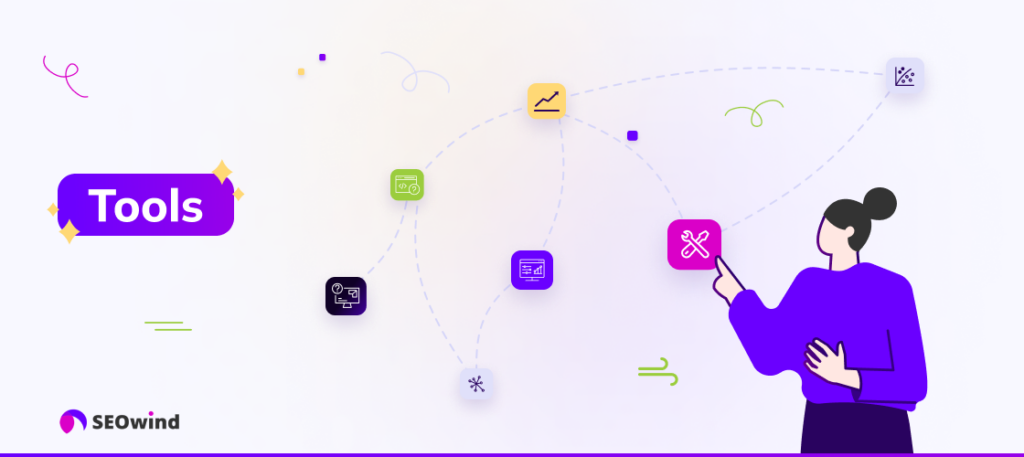
In the quest for content repurposing, various tools can enhance your workflow, save precious time, and streamline processes. To effectively repurpose content, you should invest in the right technologies that will work well with your marketing strategy.
Here are some of the best tools to help you up your content repurposing game:
- Canva: This user-friendly graphic design tool is perfect for creating engaging visuals to accompany your repurposed content. Use Canva templates for designing infographics or Pinterest instruct graphics based on blog posts and articles.
- Lumen5: If you want to convert articles and blog posts into shareable video content, Lumen5 is an invaluable choice. The AI-powered platform makes creating videos optimized for social media platforms like Facebook and Instagram easy.
- Trello: Trello’s visual boards make project management a breeze by organizing ideas and tasks into customizable cards. Use Trello to plan workflows for Content repurposing projects by keeping track of which pieces need reformatting or editing.
- Hootsuite: Social media management couldn’t be easier with Hootsuite’s comprehensive suite of features designed specifically for marketers who deal with multiple platforms simultaneously. Schedule reposts of older material across social accounts while tracking engagement metrics through detailed analytics reporting.
- IFTTT (If This Then That): Utilize this powerful automation service to set up custom triggers that automatically execute actions between apps when specific conditions are met – giving you more time back so that you can focus on what matters most: creating quality content.
- BuzzSumo: This content analysis and social media management platform is ideal for identifying high-performing assets that can be repurposed. BuzzSumo helps you uncover which existing pieces resonate best with your target audience, offering actionable insights that inform strategic decisions about future content creation.
- Grammarly: Never underestimate the power of error-free writing. Polish up any repurposed content with Grammarly—an intuitive editing tool that detects grammar and spelling errors while improving tone, clarity, and concision.
As you explore tools like these for creating content and repurposing, remember that the ultimate goal is efficiency and increased impact. By investing time in learning how to use these technologies effectively, you’ll save countless hours down the road while maximizing the reach of your marketing strategy.
Best Practices for Content Repurposing
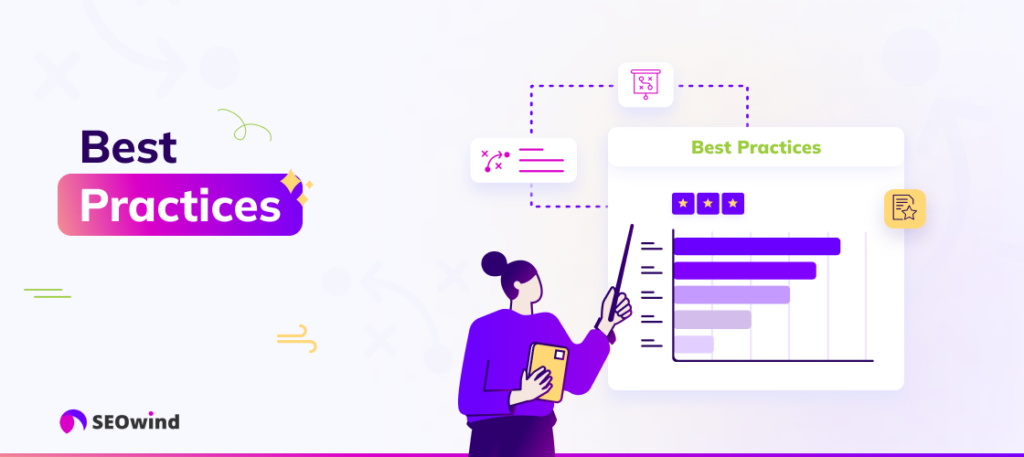
Content repurposing can help you increase your content’s reach, rank higher in search engines, and optimize your marketing strategy. Follow some best practices in content repurposing.
Analyze Your Existing Content
Before deciding on which pieces to repurpose, analyze your current content inventory. Identify top-performing articles or posts that have resonated well with your audience. Additionally, consider evergreen topics that are always relevant to ensure long-term value for the repurposed piece.
Maintain Relevancy and Quality
When choosing to repurpose content, prioritize quality over quantity. Ensure the subject matter is relevant and provides valuable information to your target audience. Keep updated on industry trends and news associated with your niche so you know what issues resonate with your readers.
Adapt the Content for Different Formats
Repurposed content should be adapted to its new format while retaining its core message. For instance, when transforming a blog post into a podcast or video series, keep key points but adjust the presentation style accordingly.
Tailor Repurposed Content for Each Platform
Each platform has unique audience preferences and expectations; therefore, customize each piece of repurposed content according to its destination platform. This could include adjusting headlines for social media shares or using appropriate image dimensions for platforms like Pinterest and Instagram.
Target Different Audience Segments
To maximize engagement across various platforms, consider targeting different audience segments during Content repurposing processes. Catering material to specific industries or varying levels of expertise makes the same content more appealing to diverse groups within your larger target market.
Acknowledge and Link Back to Original Sources
To maintain credibility within your industry, always acknowledge original sources from which some information may have been derived. Furthermore, provide appropriate links back to the original material as a courtesy and for search engine optimization purposes.
Track and Monitor Your Content Performance
As repurposed content goes live on various platforms, its performance is continuously monitored with analytics tools. Analyzing data such as traffic, shares, and comments can contribute insights into which repurposing strategies work best for your audience. Use this knowledge to refine future Content repurposing efforts.
Use AI for content repurposing
Stop wasting time creating new content from scratch. AI repurposing unlocks a smarter, more efficient way to connect with your audience. To learn more about using AI for content repurposing, go to Why AI Content Repurposing is Your New Best Friend.
By implementing these best practices throughout your content repurposing workflow, you can ensure that new and existing audiences will benefit from fresh, engaging resource materials tailored to their unique preferences and needs. Experiment with different approaches to repurposing content while maintaining high-quality standards; over time, you’ll discover which techniques are most effective within your marketing strategy.
Common Mistakes to Avoid When Repurposing Content

Repurposing Content is an effective strategy to increase your marketing reach and make the most of your valuable materials. However, certain common mistakes can negatively impact your efforts and lead to wasted time or lower engagement with your audience. This section will outline four significant pitfalls to avoid when embarking on a content repurposing journey.
Neglecting Your Audience’s Needs
The ultimate goal of content repurposing should be to cater to different segments of your target audience with tailored materials that resonate with them. A mistake to avoid when repurposing content is overlooking your various audience groups’ specific preferences and needs.
Before undertaking any repurposing project, take the time to research and understand the following:
- The unique requirements of each platform where you plan to post the repurposed material.
- The demographics and interests of the specific audience segment you are targeting.
- How these parameters may differ from those of the original format’s primary audience.
Republishing Identical Content Without Adding Value
One common misconception about content repurposing is that it simply involves reposting identical material on multiple platforms or channels. To ensure you create valuable assets for your brand, add new insights or update outdated information rather than regurgitate existing content verbatim.
When transforming a piece into another format, consider ways to:
- Enrich it with fresh perspectives or supplementary data.
- Adapt its structure, tone, and visuals in its new form for easy consumption.
- Reflect any updates in industry standards or practices since its initial publication.
- Failing to Optimize Content for SEO
Whether you’re posting newly-created blog posts or repurposed articles on other platforms like SlideShare presentations or LinkedIn Pulse articles, remember that optimizing them for search engines is vital for maximum visibility. You must optimize adequately to avoid your hard work going unnoticed.
Keep these tips in mind while repurposing Content for SEO:
- Incorporate relevant keywords, including long-tail variations and synonyms.
- Review metadata, such as title tags, meta descriptions, and alt-text for images.
- Ensure internal and external linking strategies are sound.
Not Tracking the Success of Your Repurposed Content
Publishing repurposed content and moving on without analyzing its performance is tempting. However, tracking metrics related to engagement and reach is critical in understanding whether or not you’re achieving your goals through this practice.
To measure the success of your Content repurposing efforts:
- Set specific KPIs (key performance indicators) aligning with your objectives.
- Review any available analytics from both organic search data and social media insights.
- Utilize additional tools like Google Search Console or Ahrefs to monitor site traffic, backlinks, and other aspects of your online presence directly impacted by repurposing initiatives.
By being mindful of these common mistakes when repurposing content, you’ll be more likely to enjoy tangible returns on investment from this marketing strategy. Future projects will also benefit from what you’ve learned, enabling a continual improvement process for all your content creation endeavors.
Measuring the Success of Your Content Repurposing Efforts

Implementing a content repurposing strategy can significantly benefit your overall marketing efforts. Still, it’s essential to measure the success to understand how effective your approach is and make adjustments as necessary. Determining which metrics you should track will depend on your goals and objectives.
Key Performance Indicators (KPIs) for Content Repurposing
To effectively evaluate your content repurposing efforts, consider using several key performance indicators (KPIs), including:
- Website Traffic: Analyze how much organic traffic you drive to specific pieces of repurposed content on your website.
- Conversion Rates: Measure if conversions have increased since implementing a content repurposing strategy, indicating that refreshed or reformatted material resonates with users better.
- Social Media Engagement: Monitor shares, likes, comments, and retweets for social media posts containing repurposed content.
- Email Open Rates & Clickthrough Rates: Assess whether reusing existing material in e-newsletters results in higher open rates or clickthroughs from recipients.
By carefully observing these KPIs before and after introducing a content repurposing strategy, you’ll gain insights into its effectiveness and impact on your marketing goals.
Using Analytics Tools
Utilizing various analytics tools will help measure the progress of your content repurposing workflow:
- Google Analytics: Understanding key metrics like pageviews, unique visitors, session duration, and bounce rate for articles featuring repurposed content.
- Social Media Analytics: Platforms like Twitter Analytics or Facebook Insights offer valuable data on follower growth and engagement levels.
- Email Marketing Software Metrics: Most email marketing software providers include reporting features that help measure the effectiveness of email campaigns using repurposed material.
These analytics tools will provide insightful data and inform your decision-making process about future content repurposing initiatives.
Conducting Regular Reviews
Regularly reviewing and assessing your content repurposing strategy’s impact guarantees continuous improvement, agility, and adaptability to your target audience’s needs and expectations. Consider scheduling periodic analysis sessions focused on the following:
- Identifying patterns in the performance of individual types of repurposed content,
- Discovering insights into how different audiences interact with various formats (e.g., blog posts vs. social media content),
- Analyzing changes in KPIs over time to determine if any adjustments need to be made for better results.
Measuring the success of your content repurposing efforts is crucial in determining its effectiveness and making decisions for fine-tuning your approach. By understanding critical metrics such as website traffic and conversion rates, leveraging analytics tools, and conducting regular reviews, you can optimize this strategy for maximum impact on your marketing goals.
How would you automate content repurposing?
Implementing automation in your content repurposing workflow can save time and resources, allowing you to focus on strategic growth initiatives. It helps maintain consistency and enhances the efficiency of delivering repurposed content across multiple channels. To begin automating the process of content repurposing, consider the following approaches:
Use Content Scheduling and Distribution Tools
To streamline the process of sharing your repurposed content, rely on content scheduling tools that automatically share it across various platforms according to a predefined schedule. Some popular options include Buffer, Hootsuite, and CoSchedule. These tools can simplify your efforts to manage social media accounts and ensure regular posting.
Set Up Email Automation
To transform blog posts into email series or newsletters, use email marketing services like Mailchimp or ConvertKit, which provide built-in automation features. These tools help segment subscribers based on their interests, craft personalized emails with relevant content, and deliver them at optimal times for higher engagement rates.
Benefit from AI-powered Solutions
Utilize AI-driven platforms like MarketMuse or Frase to assess which topics perform well among your audience while identifying potential opportunities for topical variation when repurposing existing pieces. Such solutions allow you to analyze data-driven insights about your competitors’ content, too, so that you can make informed decisions regarding the direction of your automated repurposing strategy.
Implement IFTTT (If This Then That) Integrations
Leverage IFTTT as an automation tool that connects different apps by creating conditional statements from one service’s action triggering another altogether- making such workflows seamless through ‘Applets.’ For instance – if you happen on social media after which, an automatic response ensues, i.e., when a new blog post is published on WordPress, it’s shared immediately across all connected social media profiles, strengthening the distribution pipeline further without the manual intervention required.
Utilize Content Management Systems (CMS)
Opt for a CMS like WordPress, HubSpot, or Drupal to handle repurposed content more effectively. Many offer various plugins and integrations that help automate additional aspects, such as triggering related post suggestions after publishing an article or automating the entire process of updating old posts with new information.
By automating content repurposing through tools, systems, and AI-based solutions, you will enhance your marketing strategy while potentially increasing its overall effectiveness by streamlining operations. Keep exploring technological advances to remain up-to-date on the latest automation options and continue refining this essential aspect of successful modern business endeavors.
How to Repurpose Long-Form AI Content?

Long-form AI content can be a goldmine for marketers. From giving your audience new insights, revealing trends, and expert advice, long-form content is precious. But how do you efficiently repurpose this treasure trove of knowledge? Here’s a step-by-step guide on how to repurpose long-form AI-generated content.
Write long-form, comprehensive AI content
Once you have comprehensive AI content ready, analyze the material. Examine its structure, main points, key takeaways, and relevant data or statistics. Note any subtopics that make compelling standalone pieces or could be grouped into a collection with other related items.
Break It Down Into Smaller Pieces
Once you’ve analyzed your long-form AI content, break it into smaller parts like articles, blog posts, social media updates, infographics, or other formats that suit the core message.
Consider the following points when breaking down AI-generated content:
- Identify areas where multiple pieces of standalone content can be created
- Extract key statistics and data for quick consumption
- Create lists or bullet points summarizing complex ideas
Cater to Different Platforms
After breaking down your content into smaller segments, consider repurposing it for various platforms such as:
- Blog post: Transform your long-form AI article into a series of engaging blog posts.
- Infographics: Use visual aids to summarize insights based on data from your AI report.
- Podcast or video: Use audio and visual formats to teach your audience the key takeaways from your AI content.
- Ebooks or whitepapers: Collate in-depth information from long-form AI into consumable ebooks or whitepapers.
- Optimize for Your Target Audience
Tailor repurposed content for each platform’s specific audience to boost engagement. This means using language that resonates with your target demographic, addressing their pain points, and providing solutions tailored to their needs.
Automate the Process
To repurpose long-form AI content at scale, automate the process using tools like:
- Content curation platforms: Use AI-driven platforms like Curata or BuzzSumo to gather relevant content and streamline distribution across various channels.
- Design apps: Leverage Canva or Adobe Spark to quickly create visuals for blog posts, infographics, and social media updates.
- Automation apps: Employ tools like Hootsuite or Buffer to schedule social media updates with repurposed content.
Properly transforming long-form AI-generated
Common Questions on Content Repurposing
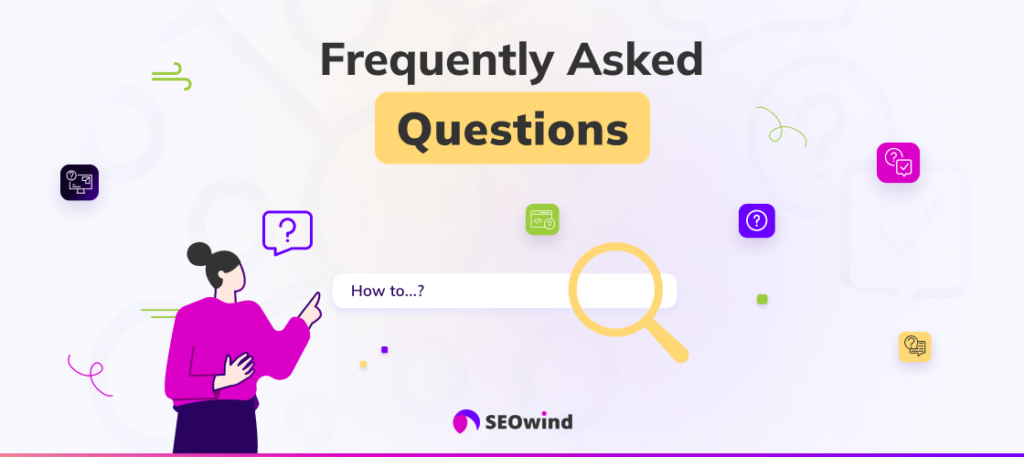
As content repurposing becomes more prominent in the marketing industry, marketers and content creators will likely have several questions regarding effective methods and best practices. In this section, we will address some common questions that arise about content repurposing.
What are your favorite ways of repurposing content?
There is no one-size-fits-all answer regarding preferred ways of repurposing content since different strategies work better for various businesses and audiences. However, here are five popular methods used by many successful content marketers:
- Creating New Blog Posts or Articles: One way of extending the lifespan of a piece of content is by extracting key points from it and expanding them into new blog posts or articles. This process allows you to dive deeper into specific topics while recycling content from older pieces.
- Transforming Written Content into Multimedia Formats: Resources such as videos, podcasts, webinars, or SlideShare presentations not only increase engagement but also cater to users with distinct preferences for consuming information. For example, turning a blog post into a podcast episode can help you reach those who prefer listening over reading.
- Refreshing and Republishing Old Blog Posts: Updating older blog posts with relevant statistics, updated examples, or even adding new insights will keep previously published pieces up to date and attract fresh eyes.
- Creating Social Media Graphics: Sharing visual snippets summarizing parts of your written content on social media platforms like Pinterest, Instagram, or Twitter can pique interest while directing traffic back to the source.
- Writing Guest Posts: Use previous content as inspiration for guest posting opportunities that allow you to share your knowledge with similar audiences and benefit from improved search engine rankings through valuable backlinks.
When deciding which method works best for you, consider your strengths (e.g., writing versus video editing), available resources (time, budget), your audience’s content preferences, and the potential reach of a specific repurposing strategy. Ultimately, successful repurposing will involve a combination of creativity, resourcefulness, and continuous experimentation to find which techniques deliver optimal results for your business.


